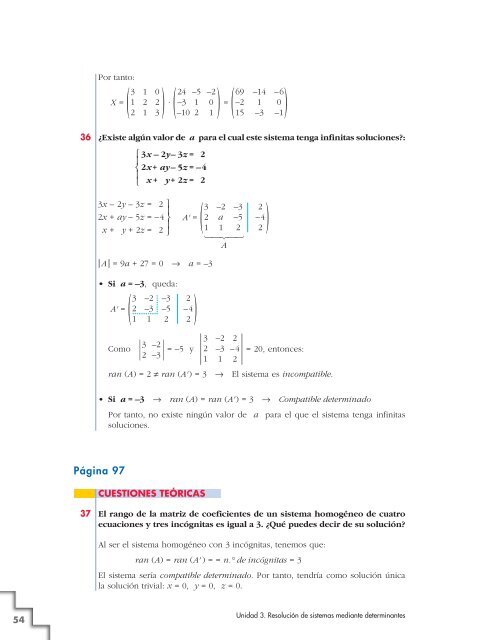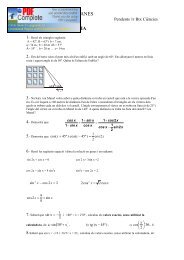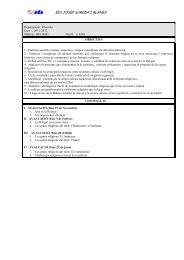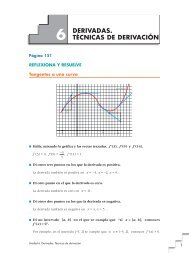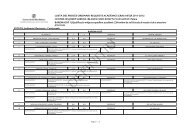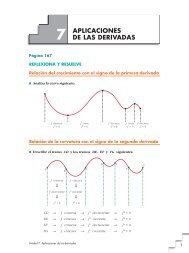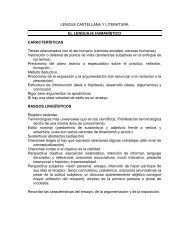Tema 3: Resolución de sistemas mediante determinantes
Tema 3: Resolución de sistemas mediante determinantes
Tema 3: Resolución de sistemas mediante determinantes
- No tags were found...
You also want an ePaper? Increase the reach of your titles
YUMPU automatically turns print PDFs into web optimized ePapers that Google loves.
°§¢§£Por tanto:3 1 0)24 –5 –2)X = 1 2 2 · –3 1 0 =(2 1 3 (–10 2 136 ¿Existe algún valor <strong>de</strong> a para el cual este sistema tenga infinitas soluciones?:° 3x – 2y– 3z = 2§¢ 2x+ ay – 5z = –4§£ x + y+ 2z = 2(–2 1 015 –3 –169 –14 –6)3x –2y – 3z = 22x + ay – 5z = –4x + y + 2z = 23 –2 –3 2)A' = 2 a –5 –4(1 1 2 214243A| A | = 9a + 27 = 0 8 a = –3• Si a = –3, queda:3 –2 –3 2)A' = 2 –3 –5 –4(1 1 2 2|3 –2 2|3 –2Como | = –5 y 2 –3 –4 = 20, entonces:2 –3 |1 1 2ran (A) = 2 ? ran (A') = 3 8 El sistema es incompatible.• Si a = –3 8 ran (A) = ran (A') = 3 8 Compatible <strong>de</strong>terminadoPor tanto, no existe ningún valor <strong>de</strong> a para el que el sistema tenga infinitassoluciones.Página 97CUESTIONES TEÓRICAS37 El rango <strong>de</strong> la matriz <strong>de</strong> coeficientes <strong>de</strong> un sistema homogéneo <strong>de</strong> cuatroecuaciones y tres incógnitas es igual a 3. ¿Qué pue<strong>de</strong>s <strong>de</strong>cir <strong>de</strong> su solución?Al ser el sistema homogéneo con 3 incógnitas, tenemos que:ran (A) = ran (A' ) = = n.° <strong>de</strong> incógnitas = 3El sistema sería compatible <strong>de</strong>terminado. Por tanto, tendría como solución únicala solución trivial: x = 0, y = 0, z = 0.54Unidad 3. <strong>Resolución</strong> <strong>de</strong> <strong>sistemas</strong> <strong>mediante</strong> <strong>de</strong>terminantes


